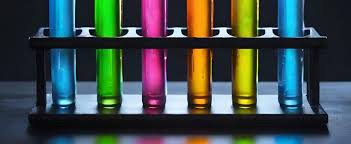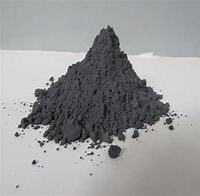Typically made use of ingredients in plastic shade matching consist of dispersants, lubricants, diffusion oils, combining representatives, compatibilizers, etc. Frequently come across material ingredients include flame retardants, toughening representatives, brighteners, UV inhibitors, anti-oxidants, antibacterial agents, antistatic representatives, and so on. One of the most usual ones are fillers for expense reduction or physical adjustment, such as light calcium carbonate, heavy calcium carbonate, talc, mica, kaolin, silica, titanium dioxide, red mud, fly ash, diatomaceous earth, wollastonite, glass beads, barium sulfate, calcium sulfate, etc, in addition to organic fillers, such as wood flour, corn starch, and other farming and forestry spin-offs. Loading and enhancing materials include glass fiber, carbon fiber, asbestos fiber, artificial natural fiber, and so on
Intend the above ingredients are included in the item’s basic materials. In that instance, they should be added to the resin resources in the exact same percentage in the color-matching proofing so as not to create a shade distinction in the succeeding manufacturing.
(Additives for Plastic Color Matching)
Dispersant
Dispersant kinds include fatty acid polyurea, hydroxy stearate, polyurethane, oligomeric soap, and so on
At present, the frequently utilized dispersant in the industry is lubricant. Lubricating substances have good dispersibility and can also enhance the fluidness and demolding efficiency of plastics during molding.
Lubricating substances are divided right into internal lubricants and outside lubricants. Inner lubes have a specific compatibility with resins, which can lower the communication in between resin molecular chains, decrease thaw thickness, and improve fluidity. Outside lubricating substances have inadequate compatibility with resins. They adhere to the surface area of molten resins to develop a lubricating molecular layer, consequently minimizing the friction in between resins and processing devices.
Lubricants
According to the chemical framework, they are primarily separated into hydrocarbons, steel soaps, lubes that play a demolding duty, fats, fatty acid amides, and esters.
Such as plastic bis ceramide (EBS)
EBS (Ethylene Bis Stearamide), likewise referred to as plastic bis stearamide, is a highly effective inner and exterior lubricating substance and dispersant commonly made use of in the plastic handling market. It is suitable for all thermoplastic and thermosetting plastics, including yet not restricted to polyethylene (PE), polypropylene (PP), polystyrene (PS), polycarbonate (PC), polyamide (PA), polyester (PET/PBT), polyurethane (PU), phenolic resin, epoxy material, and so on. Here are a few of the major roles of EBS in these plastics:
(EBS Ethylene Bis Stearamide Emulsion)
Diffusion
As a dispersant, EBS can assist evenly spread fillers and pigments during plastic handling, stay clear of cluster, and enhance the dispersion and security of pigments and fillers. This aids enhance the color harmony and mechanical properties of the end product. For instance, in masterbatch manufacturing, EBS can guarantee that pigment bits are equally distributed in the carrier material to ensure that constant color is displayed in subsequent plastic products.
Inner lubrication
In the plastic melt, EBS can reduce the friction in between particles and the shear stress of the plastic thaw, consequently lowering the thaw thickness and making the thaw circulation smoother. This helps in reducing pressure throughout extrusion or injection molding, reduces handling temperatures, and shortens molding cycles, while also minimizing power intake, improving handling performance, and enhancing the service life of devices.
Outside lubrication
EBS develops a thin lubricating film on the plastic surface, which can lower the rubbing between the plastic thaw and the steel mold, boost demolding performance, and stop sticking of plastic items throughout molding. This not only aids to boost the surface area coating of the item and decrease problems but additionally simplifies the post-processing process and improves production efficiency.
Various other features
In addition to the above main features, EBS can likewise be used as an antistatic agent to enhance the antistatic buildings of plastic items and decrease problems such as dirt adsorption caused by fixed electrical energy. In some applications, EBS can additionally boost the climate resistance and chemical resistance of plastic products.
In the shot molding procedure, when dry tinting is used, surface treatment agents such as white mineral oil and diffusion oil are typically added throughout blending to play the function of adsorption, lubrication, diffusion, and demolding. When readjusting the shade, it needs to also be added to the raw products symmetrical. Initially, add the surface area treatment representative and drink well, after that add the color powder and shake well.
When picking, the temperature level resistance of the dispersant ought to be determined according to the molding temperature of the plastic raw material. From a cost point of view, in concept, if a tool and low-temperature dispersant can be made use of, a high-temperature resistant one should not be chosen. High-temperature dispersants require to be immune to more than 250 ° C.
Vendor of EBS Ethylene Bis Stearamide Emulsion
TRUNNANO is a supplier of 3D Printing Materials with over 12 years experience in nano-building energy conservation and nanotechnology development. It accepts payment via Credit Card, T/T, West Union and Paypal. Trunnano will ship the goods to customers overseas through FedEx, DHL, by air, or by sea. If you want to know more about EBS Emulsion, please feel free to contact us and send an inquiry.
Inquiry us


